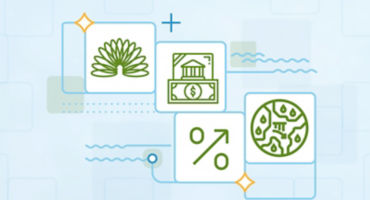Skip to main content
- Funds
- Insights
- Capabilities
- About Us
- My Account
The views expressed are those of the authors at the time of writing. Other teams may hold different views and make different investment decisions. The value of your investment may become worth more or less than at the time of original investment. While any third-party data used is considered reliable, its accuracy is not guaranteed
As discussed in my recently published 2022 Fixed Income Outlook, co-authored by my colleague Jitu Naidu, we believe inflation and interest-rate risks look poised to supplant the global COVID-19 pandemic as the new “bogeymen” facing investors in 2022. The dual specter of persistently higher inflation and steadily rising rates has many allocators particularly worried about potential implications for their fixed income exposures. Accordingly, many are now seeking defensive portfolio strategies — so-called “hedges” — for the new year.
Market pricing for longer-term US inflation was recently in the mid-2% range, based on the latest “breakeven” inflation rates. There are still ongoing debates as to likely inflation outcomes going forward, but most of the informed forecasts appear to fall broadly into one of two camps:
While inflation may overshoot 3%, it will ultimately be tempered by Fed rate hikes and other actions, suggesting that the bulk of the upward move in inflation expectations may be behind us.
But for investors who are concerned about scenario 2, or for those who wish to be more tactical in their positioning, there are several solutions that we think may help insulate a fixed income portfolio from the double threat of higher inflation and rising rates. Here are some, along with “pros” and “cons” to consider for each:
Pro: These securities provide direct inflation hedges and are generally of higher quality.
Con: At today’s yield levels, they effectively “lock” investors into negative real yields. And the effectiveness of TIPS as a hedge against realized inflation can vary greatly by maturity.
Pro: Floating-rate yields typically reset and reprice as interest rates (and inflation) rise.
Con: They are subject to default risk and price volatility, particularly during market shocks, due to their sub-investment-grade ratings.
High-yield credit
Pro: It tends to have lower empirical duration versus most other fixed income sectors.
Con: It may not protect against significantly higher inflation and is prone to higher default risk and price volatility than even bank loans.
Pro: A large portion of the market consists of floating-rate instruments (see above). And portions of the market may benefit if underlying secured assets rise in value during inflationary periods.
Con: As a more “niche” market sector, they may experience increased price volatility.
Convertible bonds
Pros: Their hybrid bond/stock nature allows for participation in equity market upside.
Cons: Their ability to reprice higher with inflation depends on the underlying equity performance.
Pro: They generally have access to a much wider global fixed income opportunity set.
Con: Success is often highly reliant on the active manager’s return-generating skill.
Figure 1 shows our expected relative performance for select fixed income sectors in different inflation and growth environments.
Figure 1
Other considerations will of course apply when evaluating the fixed income solutions described above. Investors should carefully weigh the risks against the potential rewards in each case. In addition, there is no guarantee that any of the performance likelihoods highlighted in Figure 1 will materialize as expected.

Flexibility with focus: how to position fixed income for volatility
Portfolio Manager Martin Harvey and Investment Director Marco Giordano explore how a focused use of flexibility can help position fixed income portfolios for volatility.

Going their separate ways: Capitalizing on bond divergence
Our fixed income experts discuss how to position portfolios for a world of uncertainty and divergence, exploring key themes and evolving bond opportunities for 2025.

Capitalizing on rate shifts: Parsing opportunities in the second half
Fixed Income Portfolio Manager Campe Goodman and Fixed Income Strategist Amar Reganti discuss how to capitalize on potential rate shifts in the second half of the year

June FOMC meeting: May disinflation is welcome, but is not enough for a rate cut
Fixed Income Analyst Caroline Casavant discusses what June's FOMC meeting tells us about the US Federal Reserve’s latest thinking on interest-rate cuts.
FOMC: Stable policy amid market volatility
The Fed is holding steady amid market turmoil. See our quick notes on the FOMC's March policy statement, forecasts, and the Fed chair's press conference.

Agency MBS key questions for 2024
Is there room for mortgage spreads to tighten further? Brian Conroy and Joseph Marvan examine this and seven other questions that will be significant for the agency MBS market in 2024.

Credit market outlook: Partly sunny with a chance of good value
In his 2023 credit market outlook, Fixed Income Portfolio Manager Rob Burn highlights some potentially attractive opportunities in the wake of this year's market sell-off.
URL References
Related Insights